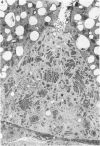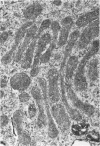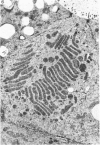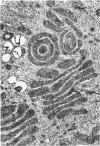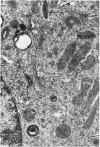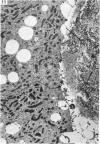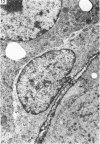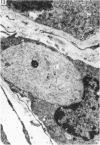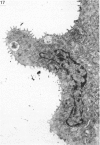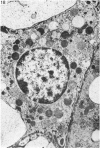Abstract
The Harderian gland of the Australian Plains mouse (Pseudomys australis) consists of tubules lined by a single layer of epithelial cells with a surrounding meshwork of myoepithelial cells. The epithelium contains three types of cell. Type I cells, characterised by their many large apical lipid vacuoles, are comparable with cells reported in other rodents. Secretion is exocytotic and, to a lesser extent, apocrine. Type II cells are highly distinctive with extremely large mitochondria arranged in stacks and whorls. Unusually for Harderian glands, these cells possess prominent conventional Golgi complexes and lysosomes. Cytoplasmic 'slashes', possible vacuole-precursors, are also present. Type III cells have few distinguishing features and may be resting cells. They are occasionally binucleate and mitotic figures occur. The gland contains stored porphyrins, chiefly protoporphyrin, in the form of solid intraluminal accretions. There is a marked sex difference, with females having higher levels of porphyrin than males. Among the components of the interstitial tissue are mast cells, plasma cells and porphyrin-containing macrophages. The secretory duct contains large quantities of cell debris, including nuclei, and is lined by columnar cells with single large apical vacuoles. The outer opening of the duct is lined by mucus-secreting cells and stratified squamous epithelium.
Full text
PDF
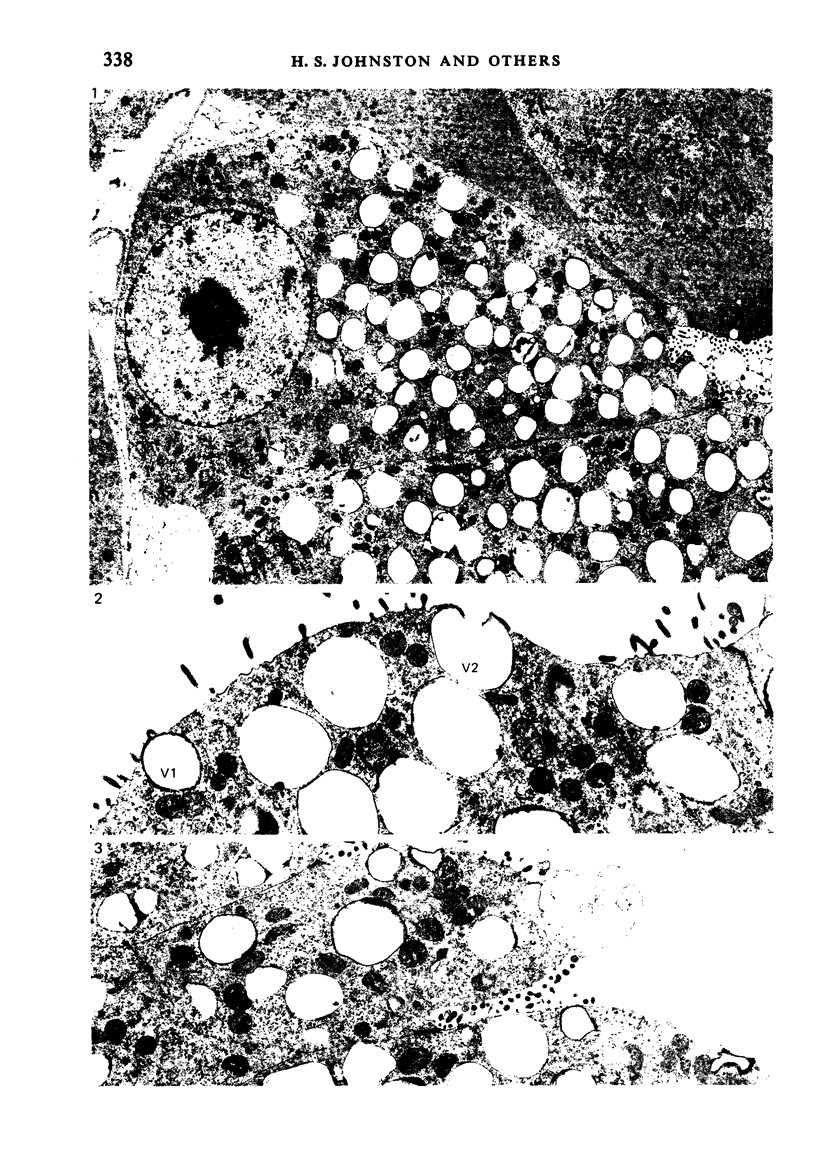
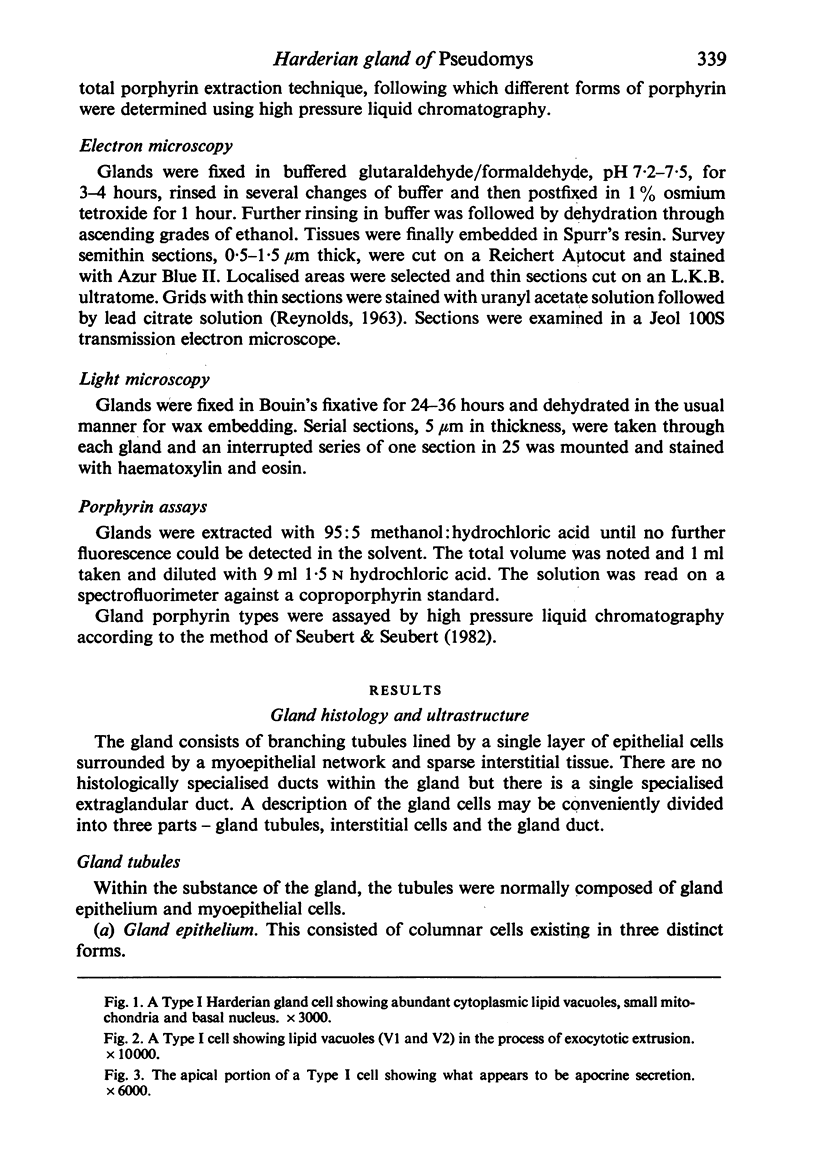

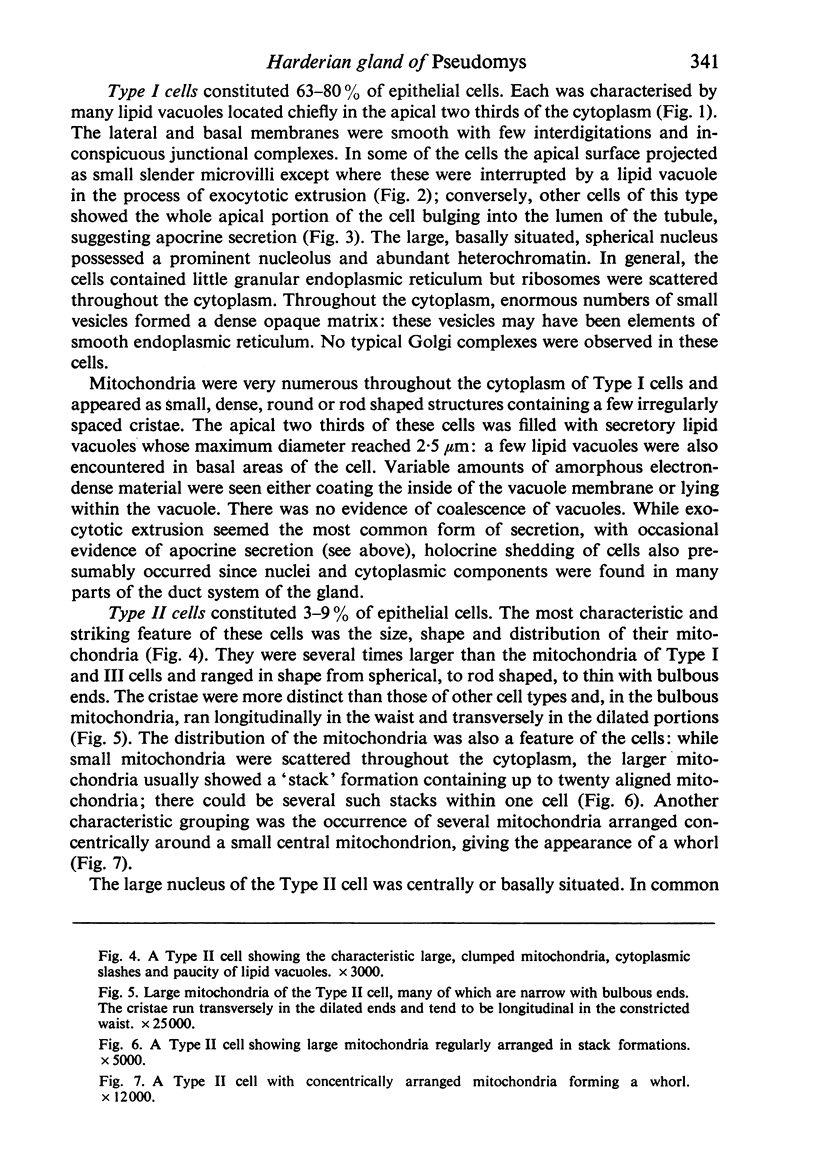
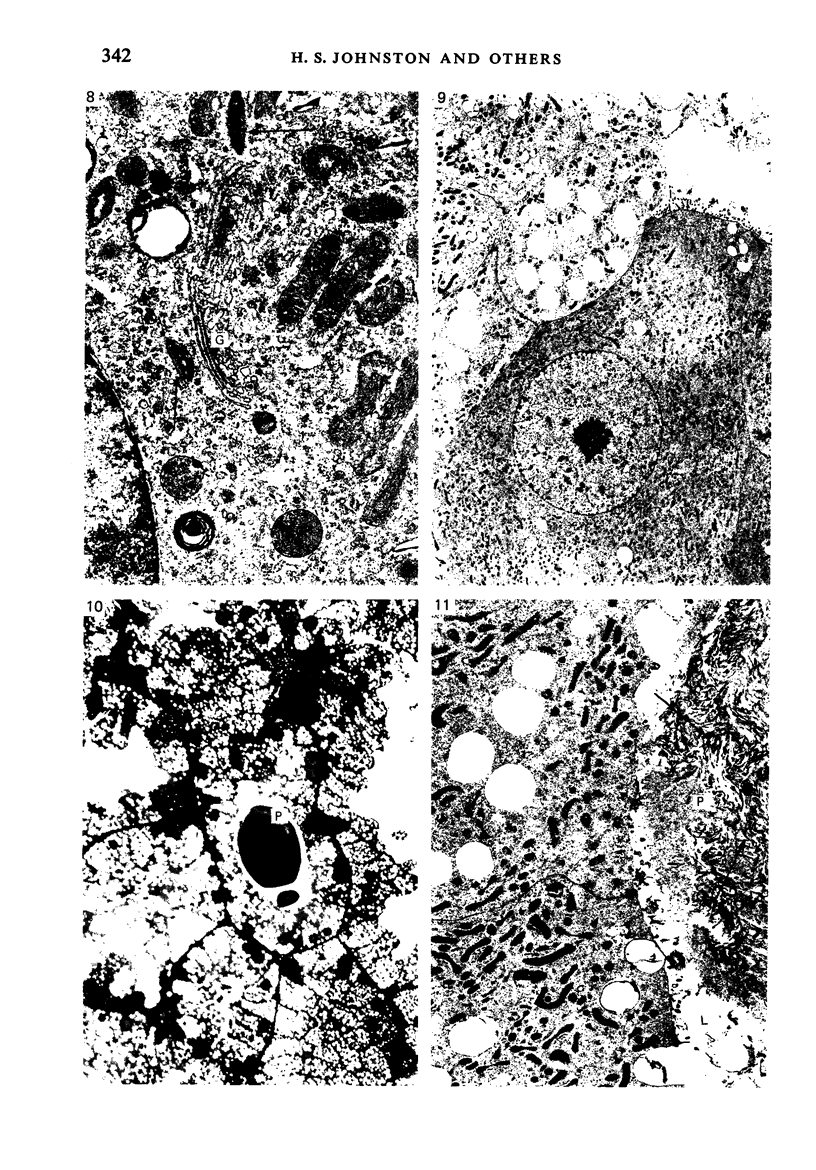
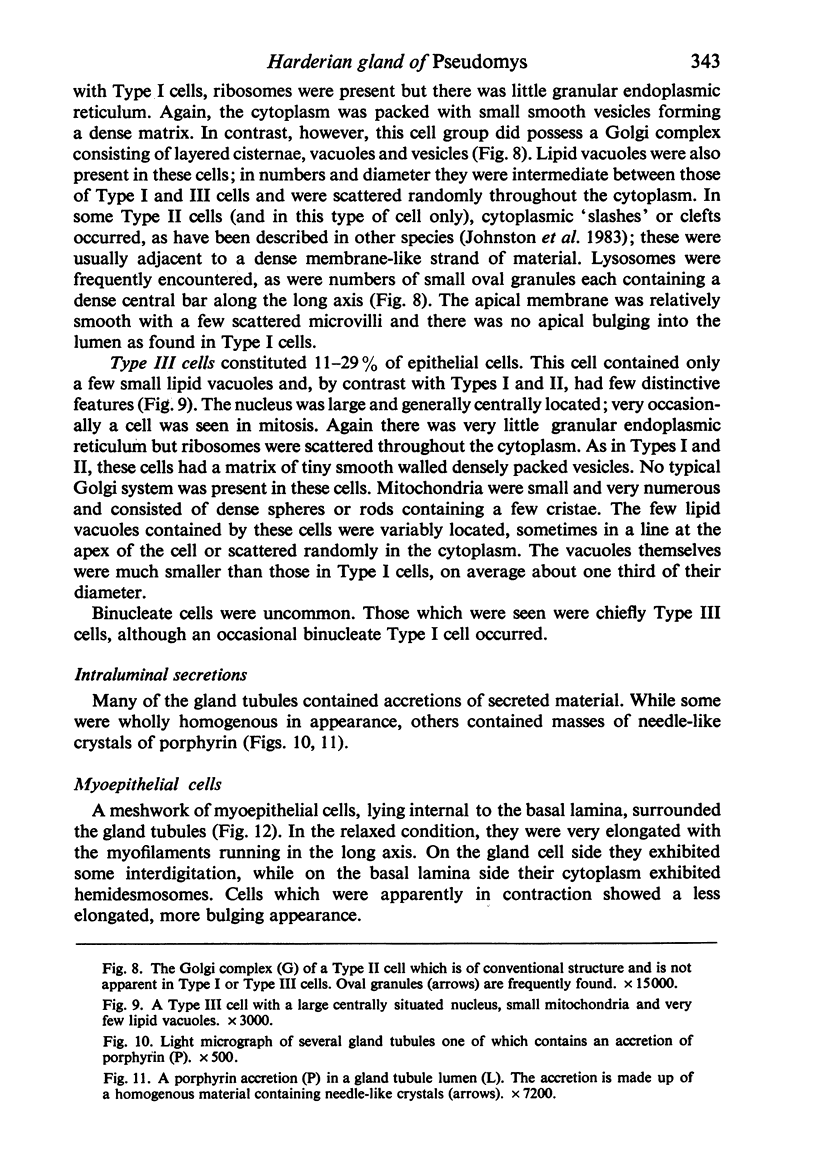


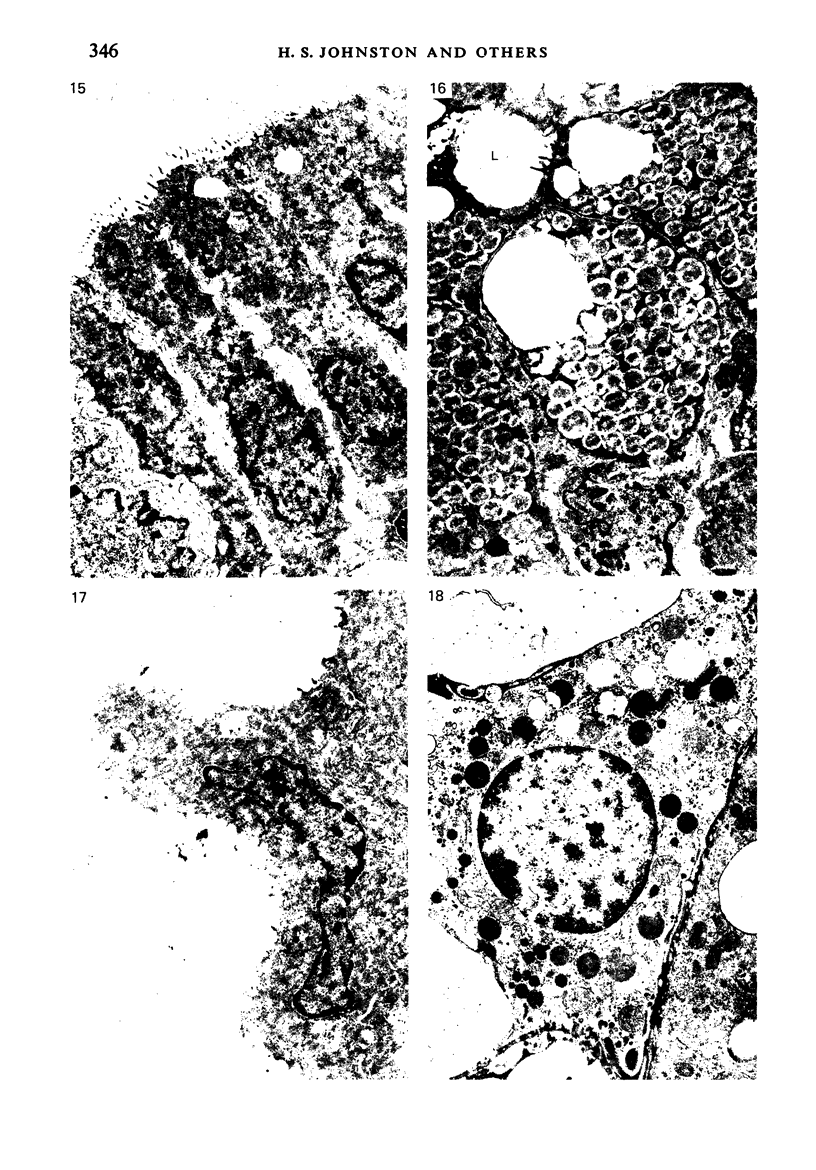
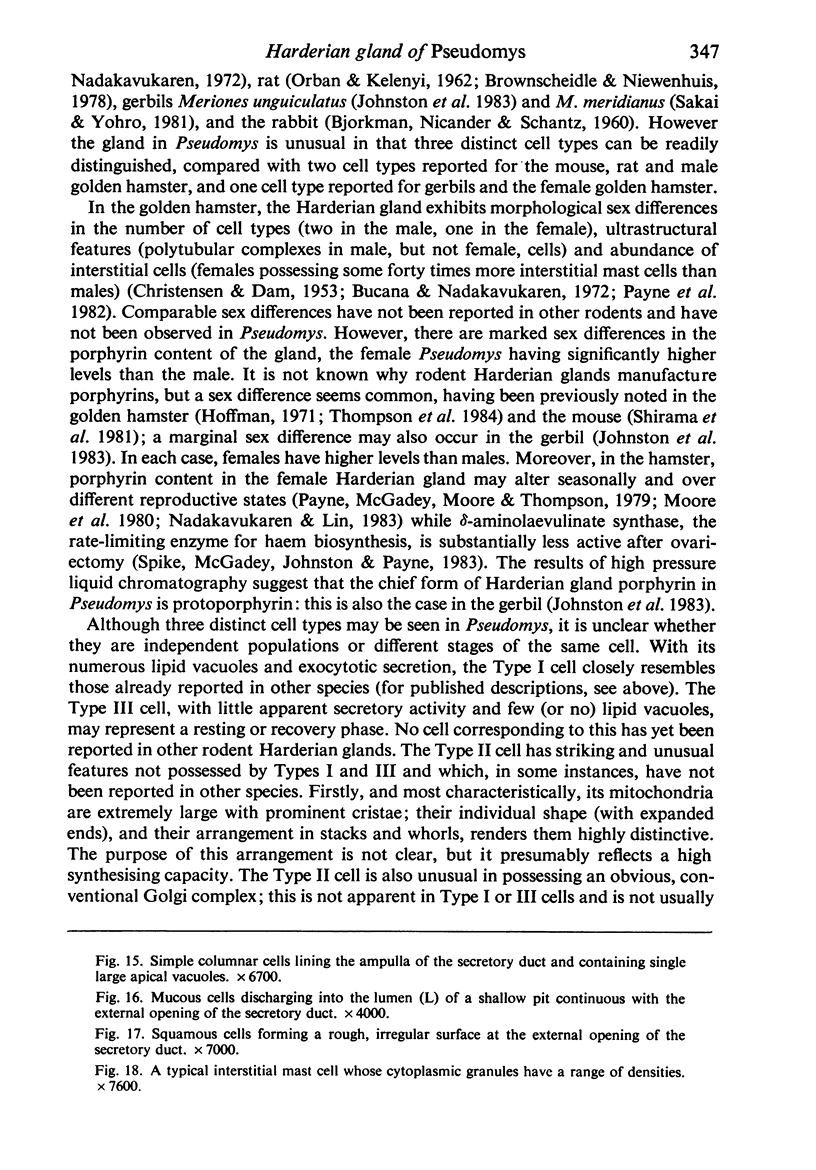
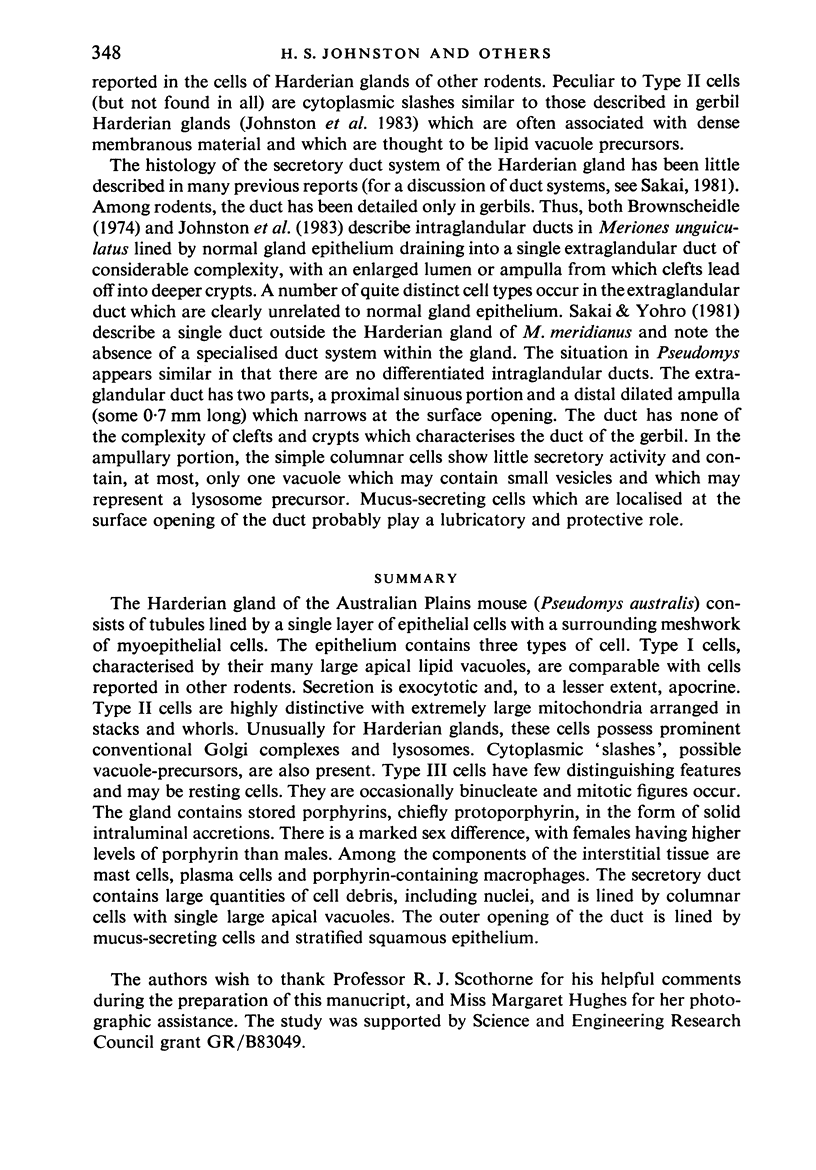

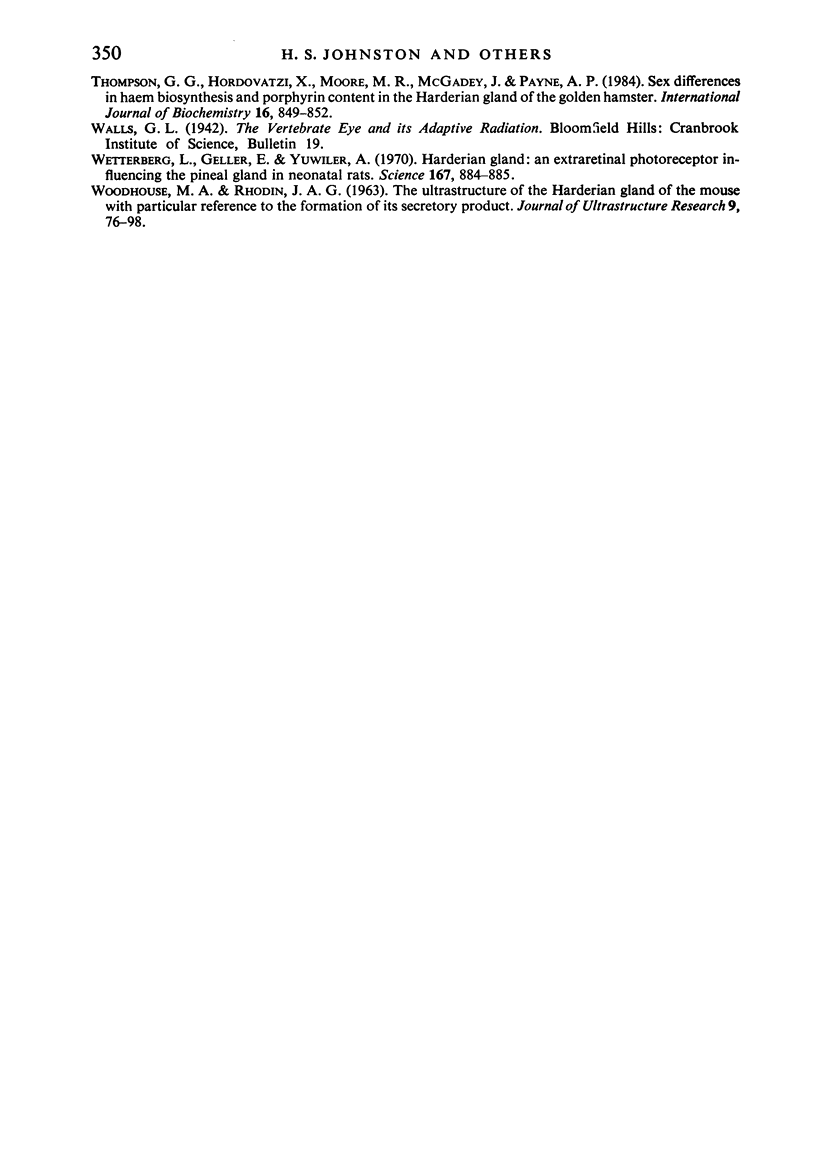
Images in this article
Selected References
These references are in PubMed. This may not be the complete list of references from this article.
- Albini B., Wick G., Rose E., Orlans E. Immunoglobulin production in chicken Harderian glands. Int Arch Allergy Appl Immunol. 1974;47(1):23–34. doi: 10.1159/000231198. [DOI] [PubMed] [Google Scholar]
- BJOERKMAN N., NICANDER L., SCHANTZ B. On the histology and ultrastructure of the Harderian gland in rabbits. Z Zellforsch Mikrosk Anat. 1960;52:93–104. doi: 10.1007/BF00344641. [DOI] [PubMed] [Google Scholar]
- Brownscheidle C. M., Niewenhuis R. J. Ultrastructure of the harderian gland in male albino rats. Anat Rec. 1978 Mar;190(3):735–753. doi: 10.1002/ar.1091900309. [DOI] [PubMed] [Google Scholar]
- Bucana C. D., Nadakavukaren M. J. Fine structure of the hamster Harderian gland. Z Zellforsch Mikrosk Anat. 1972;129(2):178–187. doi: 10.1007/BF00306934. [DOI] [PubMed] [Google Scholar]
- Burns R. B. Histological and immunological studies on the fowl lacrimal gland following surgical excision of Harder's gland. Res Vet Sci. 1979 Jul;27(1):69–75. [PubMed] [Google Scholar]
- CHRISTENSEN F., DAM H. A sexual dimorphism of the harderian glands in hamsters. Acta Physiol Scand. 1953 Feb 28;27(4):332–336. doi: 10.1111/j.1748-1716.1953.tb00935.x. [DOI] [PubMed] [Google Scholar]
- Hoffman R. A. Influence of some endocrine glands, hormones and blinding on the histology and porphyrins of the Harderian glands of golden hamsters. Am J Anat. 1971 Dec;132(4):463–478. doi: 10.1002/aja.1001320405. [DOI] [PubMed] [Google Scholar]
- Johnston H. S., McGadey J., Thompson G. G., Moore M. R., Payne A. P. The Harderian gland, its secretory duct and porphyrin content in the mongolian gerbil (Meriones unguiculatus). J Anat. 1983 Oct;137(Pt 3):615–630. [PMC free article] [PubMed] [Google Scholar]
- Lin W. L., Nadakavukaren M. J. delta-Aminolevulinate synthase activity in the Harderian glands of male and female golden hamsters. Comp Biochem Physiol B. 1982;71(3):539–540. doi: 10.1016/0305-0491(82)90425-4. [DOI] [PubMed] [Google Scholar]
- Moore M. R., Thompson G. G., Payne A. P., McGadey J. Seasonal variation in delta-aminolaevulinate synthase and porphyrin content in the Harderian gland of the female golden hamster (Mesocricetus auratus). Int J Biochem. 1980;12(3):501–504. doi: 10.1016/0020-711x(80)90137-8. [DOI] [PubMed] [Google Scholar]
- Mueller A. P., Sato K., Glick B. The chicken lacrimal gland, gland of Harder, caecal tonsil, and accessory spleens as sources of antibody-producing cells. Cell Immunol. 1971 Apr;2(2):140–152. doi: 10.1016/0008-8749(71)90033-5. [DOI] [PubMed] [Google Scholar]
- Nadakavukaren M. J., Lin W. L. Influence of short photoperiods on the ultrastructure of hamster Harderian glands. Cell Tissue Res. 1983;233(1):209–213. doi: 10.1007/BF00222244. [DOI] [PubMed] [Google Scholar]
- Payne A. P., McGadey J., Johnston H. S., Moore M. R., Thompson G. G. Mast cells in the hamster Harderian gland: sex differences, hormonal control and relationship to porphyrin. J Anat. 1982 Oct;135(Pt 3):451–461. [PMC free article] [PubMed] [Google Scholar]
- Payne A. P., McGadey J., Moore M. H., Thompson G. G. Changes in Harderian gland activity in the female golden hamster during the oestrous cycle, pregnancy and lactation. Biochem J. 1979 Mar 15;178(3):597–604. doi: 10.1042/bj1780597. [DOI] [PMC free article] [PubMed] [Google Scholar]
- Payne A. P. The attractiveness of Harderian gland smears to sexually naive and experienced male golden hamsters. Anim Behav. 1979 Aug;27(Pt 3):897–904. doi: 10.1016/0003-3472(79)90027-7. [DOI] [PubMed] [Google Scholar]
- REYNOLDS E. S. The use of lead citrate at high pH as an electron-opaque stain in electron microscopy. J Cell Biol. 1963 Apr;17:208–212. doi: 10.1083/jcb.17.1.208. [DOI] [PMC free article] [PubMed] [Google Scholar]
- Reiter R. J., Klein D. C. Observations on the pineal gland, the Harderian glands, the retina, and the reproductive organs of adult female rats exposed to continuous light. J Endocrinol. 1971 Sep;51(1):117–125. doi: 10.1677/joe.0.0510117. [DOI] [PubMed] [Google Scholar]
- Sakai T. The mammalian Harderian gland: morphology, biochemistry, function and phylogeny. Arch Histol Jpn. 1981 Sep;44(4):299–333. doi: 10.1679/aohc1950.44.299. [DOI] [PubMed] [Google Scholar]
- Sakai T., Yohro T. A histological study of the Harderian gland of Mongolian gerbils, Meriones meridianus. Anat Rec. 1981 Jul;200(3):259–270. doi: 10.1002/ar.1092000304. [DOI] [PubMed] [Google Scholar]
- Seubert A., Seubert S. High-performance liquid chromatographic analysis of porphyrins and their isomers with radial compression columns. Anal Biochem. 1982 Aug;124(2):303–307. doi: 10.1016/0003-2697(82)90043-4. [DOI] [PubMed] [Google Scholar]
- Shirama K., Furuya T., Takeo Y., Shimizu K., Maekawa K. Influences of some endocrine glands and of hormone replacement on the porphyrins of the Harderian glands of mice. J Endocrinol. 1981 Nov;91(2):305–311. doi: 10.1677/joe.0.0910305. [DOI] [PubMed] [Google Scholar]
- Thiessen D. D., Kittrell E. M. The Harderian gland and thermoregulation in the gerbil (Meriones unguiculatus). Physiol Behav. 1980 Mar;24(3):417–424. doi: 10.1016/0031-9384(80)90229-2. [DOI] [PubMed] [Google Scholar]
- Thompson G. G., Hordovatzi X., Moore M. R., McGadey J., Payne A. P. Sex differences in haem biosynthesis and porphyrin content in the Harderian gland of the golden hamster. Int J Biochem. 1984;16(7):849–852. doi: 10.1016/0020-711x(84)90201-5. [DOI] [PubMed] [Google Scholar]
- WOODHOUSE M. A., RHODIN J. A. THE ULTRASTRUCTURE OF THE HARDERIAN GLAND OF THE MOUSE WITH PARTICULAR REFERENCE TO THE FORMATION OF ITS SECRETORY PRODUCT. J Ultrastruct Res. 1963 Aug;49:76–98. doi: 10.1016/s0022-5320(63)80037-4. [DOI] [PubMed] [Google Scholar]
- Wetterberg L., Geller E., Yuwiler A. Harderian gland: an extraretinal photoreceptor influencing the pineal gland in neonatal rats? Science. 1970 Feb 6;167(3919):884–885. doi: 10.1126/science.167.3919.884. [DOI] [PubMed] [Google Scholar]






